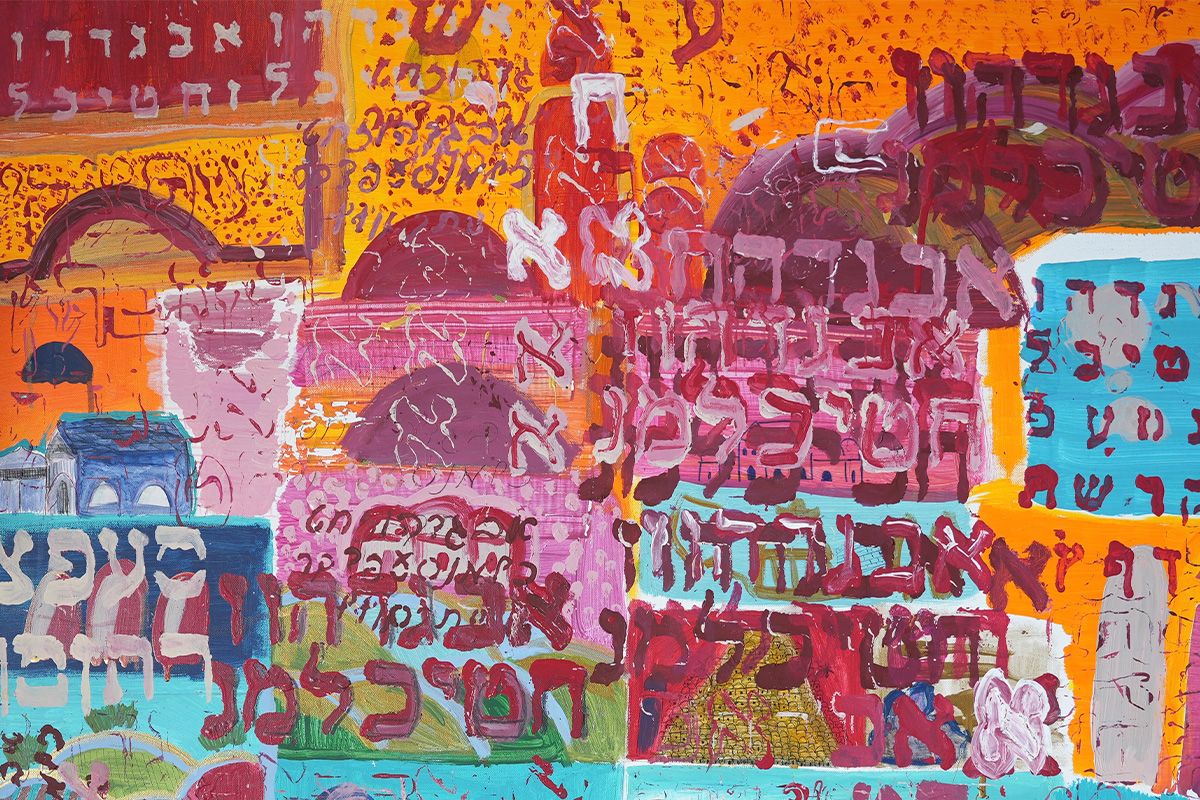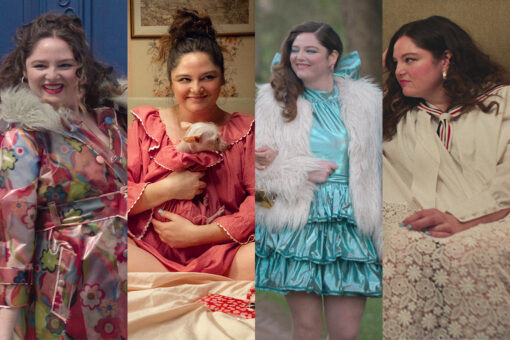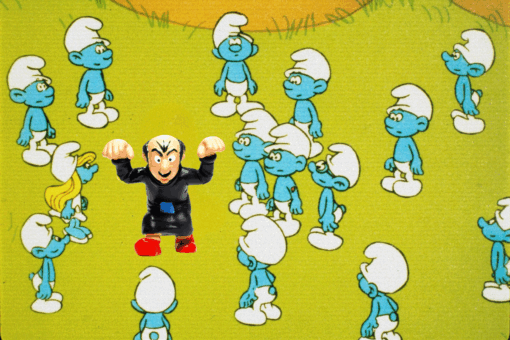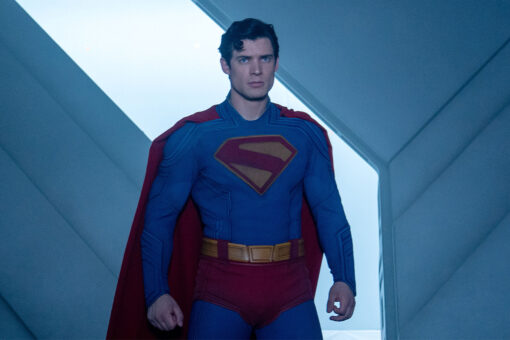Naomi Salfati grew up in Paris, surrounded by art. Her father is International Emmy Award-winner Pierre-Henry Salfati, and her mother is a painter. Salfati’s self-professed “traditional Kabbalistic household” influenced her ideas on theology, feminism and art.
As a result, Salfati says she brings a heavy layer of mysticism to everything she does. We think anyone who’s seen her large, colorful canvases covered in the beautiful, hand-drawn Alef Bet — the Hebrew alphabet — would likely agree. Her shimmering gold and neon-hued acrylic and oil paintings are likely to leave the viewer transfixed, taken into Salfati’s spiritual message: “Devotion to your unique vision can be your prayer and your spiritual practice.”
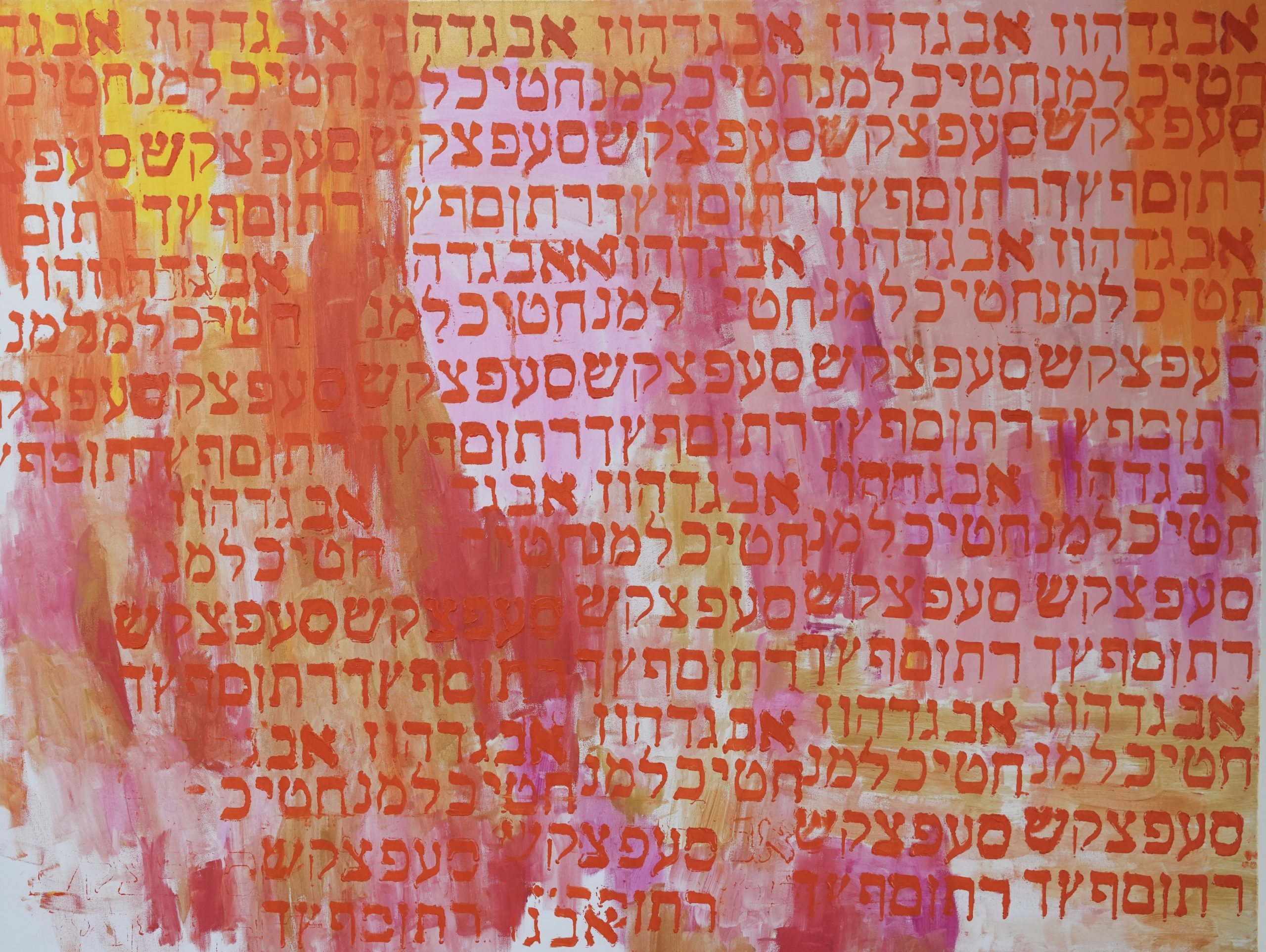
Hey Alma talked to Salfati about her art, Jewish identity and the most important things to look for in your birth chart.
You make some really incredible artwork. The way you paint the Alef Bet is gorgeous. Did you grow up reading and speaking Hebrew? Were you particularly religious?
I grew up in a traditional Jewish household. I like to call it like a traditional Kabbalistic household, because we used to perform all the typical Orthodox customs, but also rituals that were really based on my mother’s Tunisian and my father’s Algerian upbringing. My mother, especially, has been so steeped in that. We were first taught the Hebrew letters as a religious, spiritual practice.
And would you say that those Kabbalah rituals and traditions you grew up with then framed your Jewish identity and education?
The Kabbalistic practices have definitely framed my entire life. When I was in Jewish school, I always saw more than just the letters when I looked at the Hebrew text. I’ve always felt very comfortable diving deep into the extra layers — and that’s very important to my art now. For example, an Aleph. This is the first letter. It’s so simplistic. It doesn’t really spell a word yet. It doesn’t spell a prayer yet. It’s not a verse in the Torah; it’s just a letter.
I resonate with the fact that through a visual as simple as a letter, you can achieve the highest and most profound levels of transcendence. Hebrew letters are linked to primal sources within our soul. I think that if you can see it, you can heal it — so, simply gaze at the letters and your soul will be elevated, because they are inherently holy creations.
Certain letters will provoke different feelings or instincts within you. That’s why meditating upon different letters for different occasions is a recommended practice. Some will instill sentiments of faith, calm or elevated insight and perception.
I think that really comes across in your art, especially with the colors that you use. I find them so emotional. I love all the gold and the shades of blue. It feels like you’ve transformed ancient text into something really new and really personal. What kind of materials do you use to make your paintings, and what are you thinking as you paint them?
I keep it so simple. I use oil or acrylics. Part of my journey was to draw the Alef Bet small and then big — I get these massive custom canvases made, and I also did some installations on walls. I like anything I can get my hands on. I use simple paint brushes, all kinds of stencils and all kinds of fonts. I typically choose script, cursive or block font. My process is very simple. I feel very drawn to the Alef Bet. When I’m painting, I’m going to flow with it and see how big I can take it. I’ve been trying to play with all the colors as of late because I felt like maybe I was getting stale. But the gold! Growing up in a Mizrahi household, there’s a lot of gold everywhere.
When I paint, I go into a trance. I may think, I really felt drawn to blue right now and I’m going to go with a blue piece, or I’ll draw an entire canvas with gold. Then, months later, I’ll go back and maybe I’ll do the background with different colors, depending on what I feel called to do. But when I paint, I am actively aware that I am painting a spiritual medium, a spiritual channel. The letters are little vessels for divinity. I always felt drawn to their beauty because of their shapes and forms.
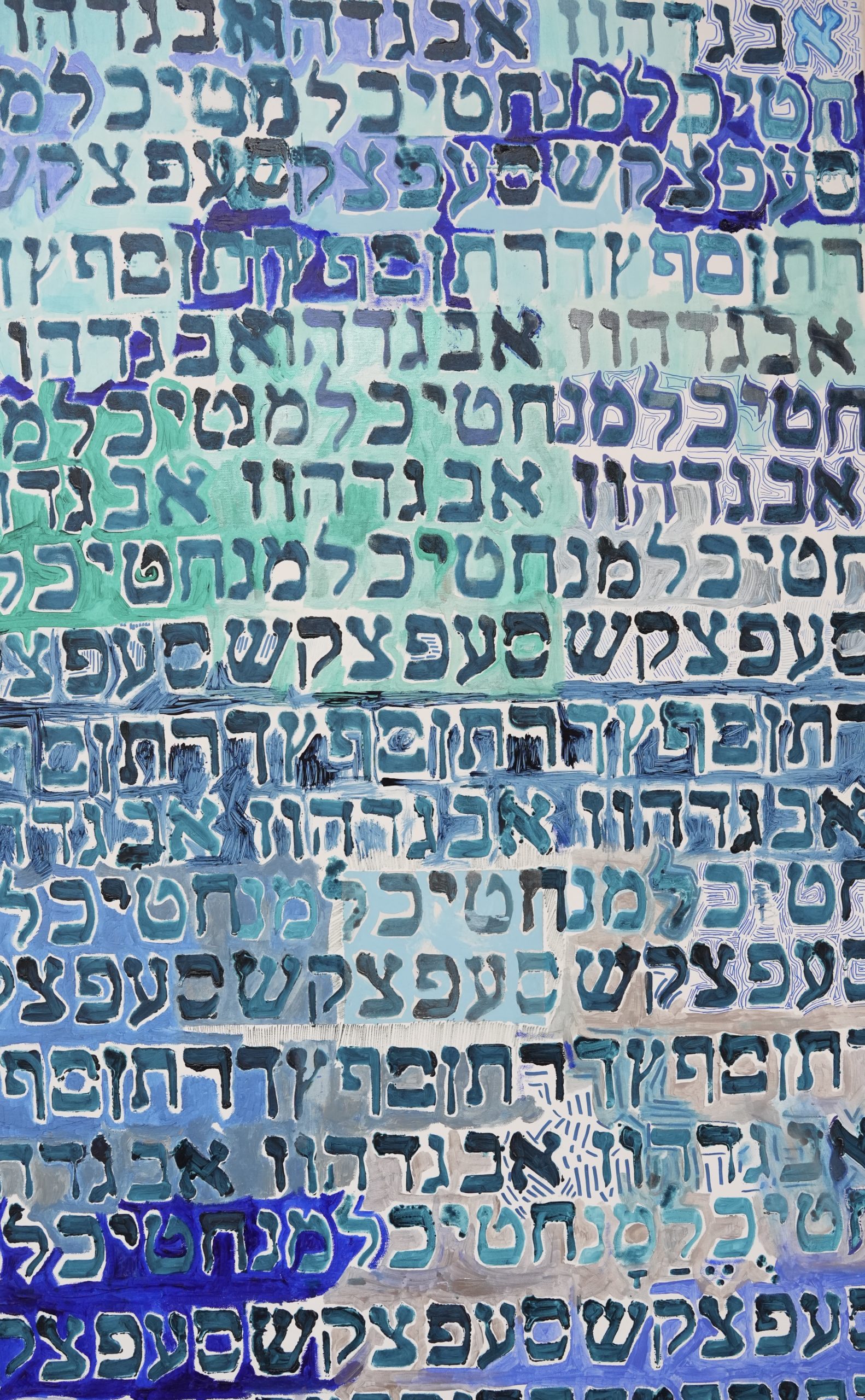
Feminism and Jewish identity are both prevalent on your Instagram. You frequently caption your photos of art with quotations that incorporate those ideas. Here’s one that I love: “They said, serve God and you’ll be free. But I am her. I said, I am her, and I’ll set myself free.” That really stuck with me. How do you blend the two ideologies so seamlessly in your art? Or even your life!
On a macro level, there is a concept of the Shechinah. I specifically chose to relate to the Shechinah as the part of divinity I align most with. It contains the divine feminine, with all its emotion and chaos. It’s been exiled, so as a Jew and as a woman, I deeply relate to her.
It’s very easy for me to connect to the idea of a people that just wants to be OK; they just want to be safe, want to return, want to feel like they belong. And I relate to that part of God, instead of the typical patriarchalism of what God is supposed to be. This is who I pray to, as a woman and as a Jew.
So when someone says to me, these are the rules, as a Jewish woman, these are the things you have to do, I’m going to say to them, actually, I know exactly what’s expected of me, because I am the Shechinah. I embody her, and that expresses itself through my art. Letters are feminine. The letter Ot also means wonder in Hebrew. Otiot, the plural, means wonders. I am releasing the feminine through the Hebrew letters: Otiyot, the ultimate feminine beings behind all creation. I love giving them a space to just be, I hear them and I hold space for them. I invite everyone to just go for it, to come home, to say: Enough to exile. Create a dwelling and hold space for the exiled parts of you. Tap into an energy of yours that feels like it has been rejected for too long. An energy that wants to come home.
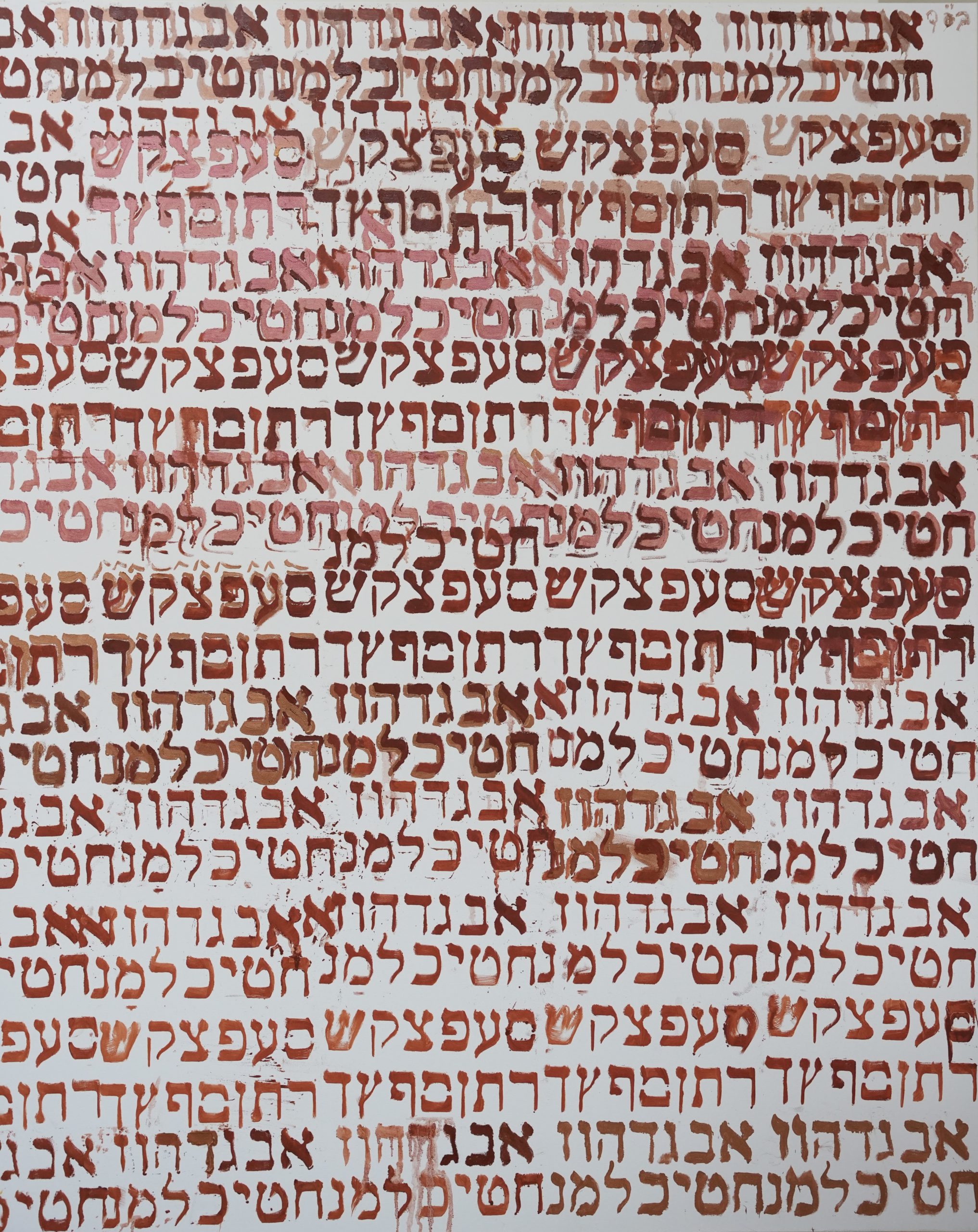
In some of your social media captions, I’ve seen that you also connect the Torah with the Zodiac. Astrology has a mystic vibe to it. Are you into astrology? What’s your sign?
What are you? Tell me first.
I’m a Cancer sun.
And what’s your moon and rising?
I’m a Leo moon and a Cancer rising.
Oh, my God. You’re a double Cancer.
Yes. I cry a lot.
And we have a Cancer full moon coming tonight! Cancer comes to this world to be loved and to be nurtured. I’m very big on astrology. First of all, I’m an Aries sun. I’m an Aries sun in the first house at zero degrees. So that makes me an extreme Aries. More importantly, my Hebrew zodiac sign falls in the month of Adar Bet, which is a month that only comes every few years. Adar Bet is said to not have a constellation over it. It’s also the month of the Jewish people. That’s because the Jewish people are said to be above time, space and above “mazal.” “Mazal” means luck, and it also means constellation. These Jewish concepts with astrology have been studied by Jewish theologians from the beginning of time. And I think it goes with the idea that nature, the stars are here for us to enjoy.
Another beautiful idea of Jewish astrology is the twelve channels of personal tikkun. The universe sends you into the house of Cancer because of your tikkun, your own personal goal in this world. This is how you can serve; this is what you need to work on. And that is very fundamental to Judaism! I think there is no better way to serve, and be more in touch with, yourself than to really learn your chart.
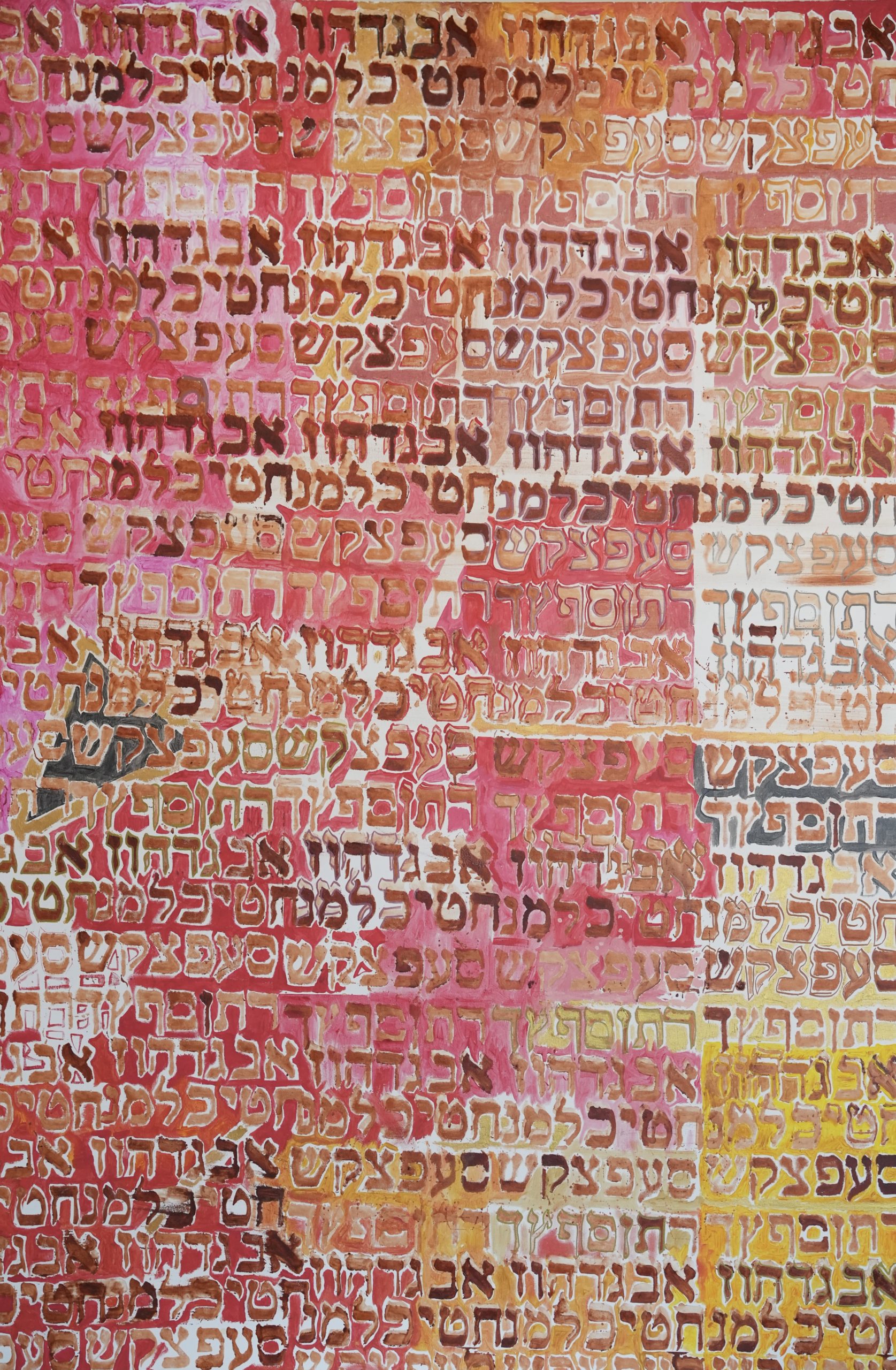
Wait, so what are YOUR big three?
I’m an Aries sun, Sagittarius moon and an Aquarius rising. I love my Aquarius rising.
Aquarius rising, that’s really artsy and very creative, right?
Yes, and you want to look at your whole natal chart. You want to see the conjunctions — you want to see what’s next to what. Also, in your chart, definitely look at your Venus. If you’re dating someone, look at their Mars and their Venus.
My Aquarius is also in my first house. An Aquarius is by definition an iconoclast, a rebel. Aquarius wants freedom more than anything. In my art, I was like, I’m going to hold space for something that may not make sense, but that’s going to set me free. And I want people to be inspired by the idea that you can take something small, you can go against societal norms, and you can just go with it. You have to believe in your lucky star.
